FLOATAWEIGH
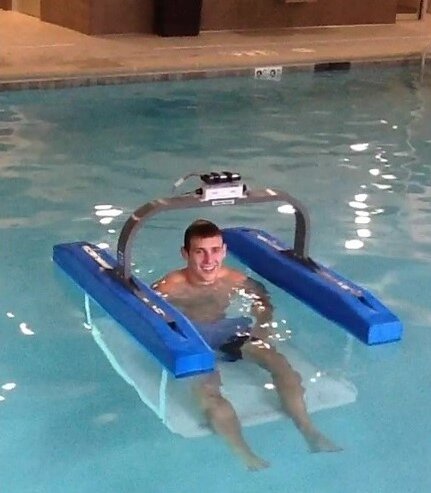
Step 1: Sit on the submerged weighing platform. 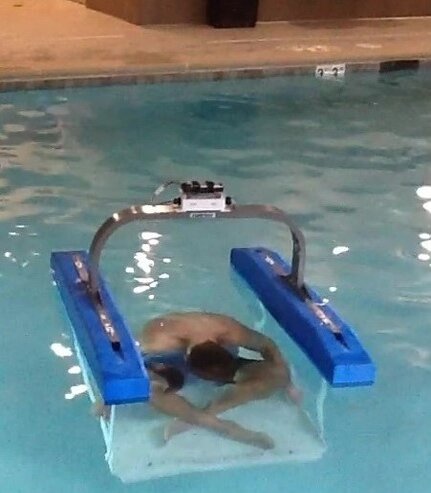
Step 2: Duck underwater for a few seconds.
The FLOATAWEIGH lets you perform hydrostatic weighing in any swimming pool with a depth of 3 feet or more. In the “TETRA” model (shown above) the platform below the water surface hangs from 4 load cells (single load cell and 2 load cell models are also available). The weighing system is powered by rechargeable batteries (included). The weight of the immersed subject is transmitted to your computer by radio waves – no wires. The FLOATAWEIGH uses the same great computer software from EXERTECH that is used by universities, wellness centers and health clubs throughout the world. Check out floataweigh.com for the whole story.
The light-weight FLOATAWEIGH TETRA is easy to assemble (4 bolts) and simple to use.

The FLOATAWEIGH is shipping with aluminum arch detached. 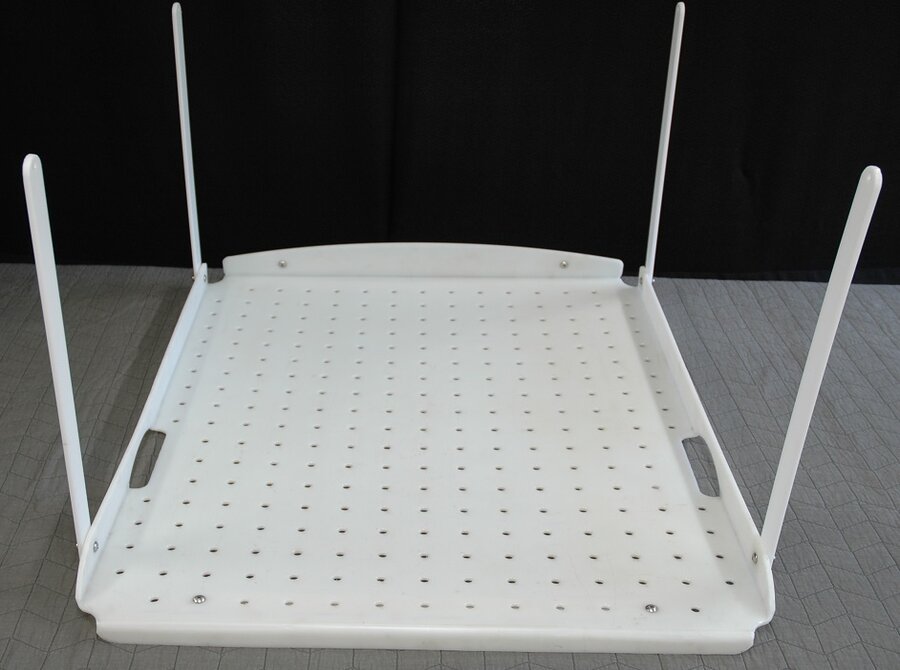
The FLOATAWEIGH platform is made of high density polyethylene with hand holds and adjustable hangers. 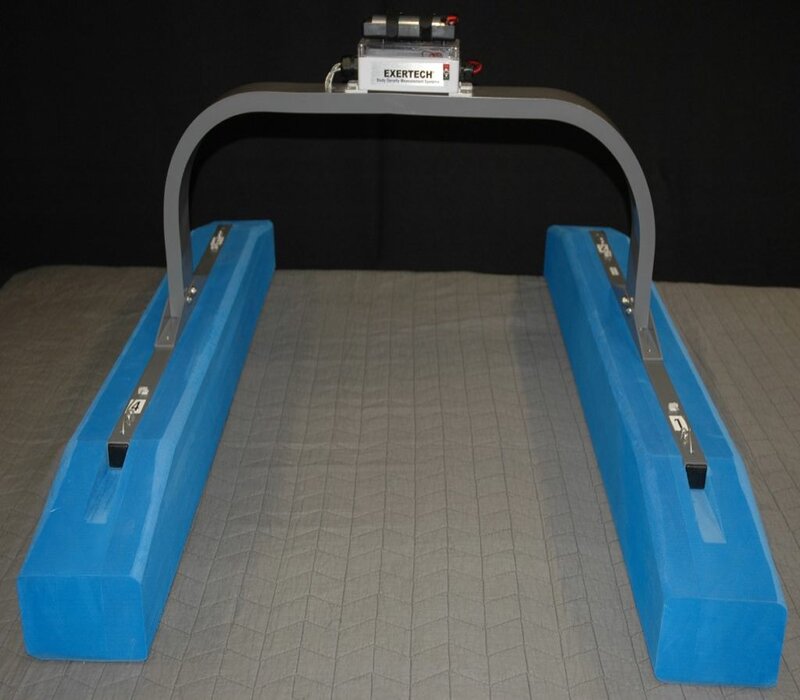
The aluminum arch attaches to the floats with 4 bolts and nuts. Four load cells are mounted inside square tubes that fit into channels in each float. The floats are made of cross linked polyethylene foam which is nearly indestructible and does not absorb water. 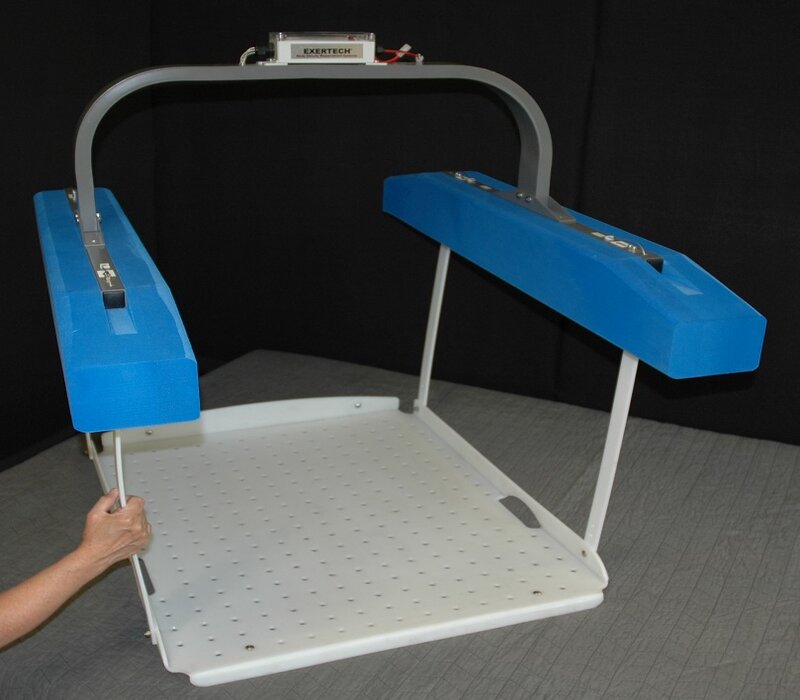
4 platform hangers connect to the load cell links using push pins for easy attachment.
Validation of a novel free-floating hydrostatic weighing apparatus
Kelsey Y. Andrist, Emily J. Alcott, Lori E. Crow, Holly R. Edelburg, Kaci M. Platz, Jenna L. Woelfel, Kent C. Hansen
Winona State University, Winona, MN
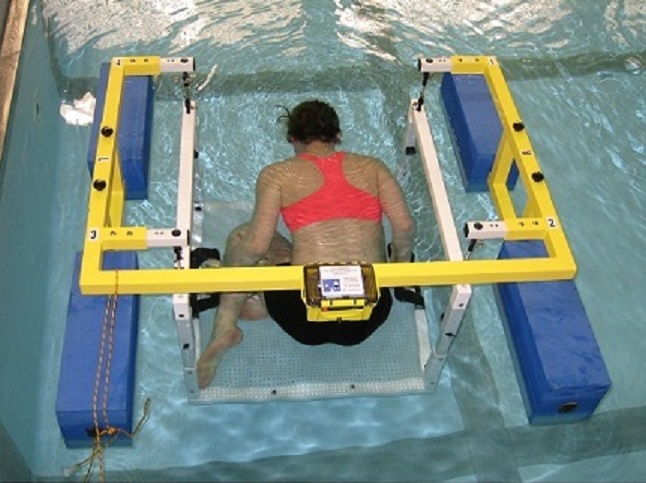
Hydrostatic weighing is considered by many a gold-standard method of assessing body composition. Limitations to using this method include, but are not limited to, space for the water tank as well as the additional cost of the tank. To circumvent these limitations, a novel apparatus has been developed that can be used in a swimming pool which is more widely available, without the additional cost of a water tank. Purpose: To evaluate the validity of a novel, floating hydrostatic weighing apparatus (FLOATAWEIGHTM) in a swimming pool against a traditional fixed hydrostatic weighing system found in a typical laboratory water tank. Methods: 34 healthy subjects (19 males, 15 females), acting as their own controls, were assessed for body composition using the floating apparatus compared to a standard fixed apparatus in a typical hydrostatic weighing tank. Both apparatuses have identical structure, load cells, electronic sampling patterns (43 samples/second) and software. The devices differed only in their environment of weighing, one floated freely in a pool while the other was fixed within a water tank. Results: The % body fat (%BF) means (±SD) are 16.3% (± 6.5%) and 16.8% (± 6.7%) for the pool and tank apparatuses respectively. The %BF range for our subjects included 6.1% (5.4%) – 27.3% (27.6%) in the tank (pool). We found a significantly positive correlation (y = 0.9997x + 0.5013) between the two devices resulting in an R2 = 0.9416 (p < 0.001). On average, the tank resulted in only a 0.5% greater body fat percentage compared to the pool. Discussion and Conclusion: The results suggest that the new hydrostatic weighing system correlates well with the fixed version in the controlled environment of a water tank. The new floating apparatus adequately overcame the below-water current perturbations inherent to most swimming pools due to water pumps. The clinical significance is that the FLOATAWEIGHTM measured our subjects very closely to the fixed version with a 0.5% difference in body fat. These results support the validity of the new FLOATAWEIGHTM apparatus for body composition assessment.
Abstract for research project on the original FLOTAWEIGH. Presented at the 2014 annual meeting of the American College of Sports Medicine.

